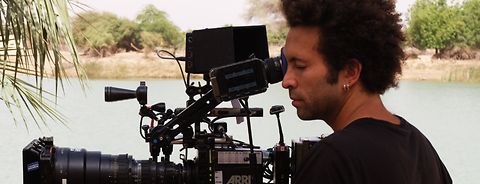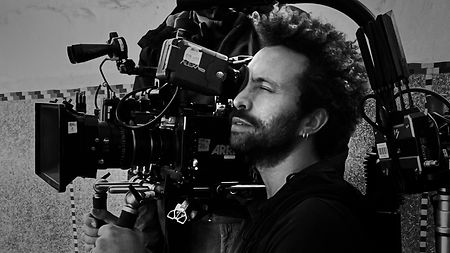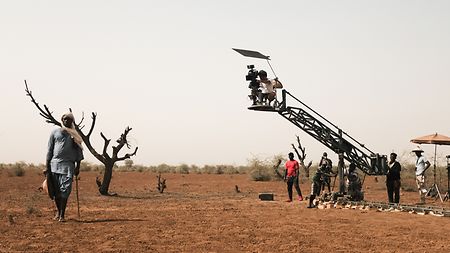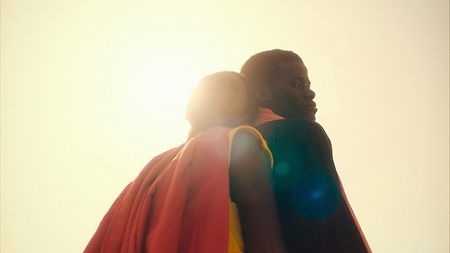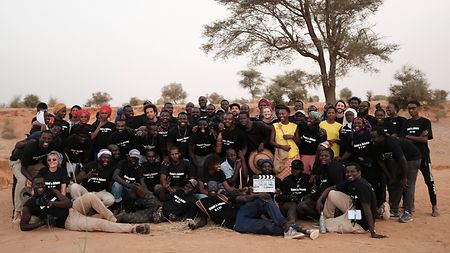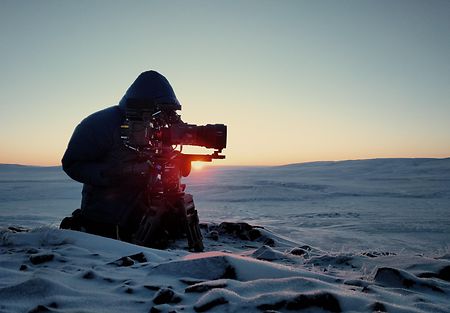A former student of French television and film school La Fémis, cinematographer Amine Berrada AFC showed the full extent of his talent in two feature films selected for Cannes Film Festival 2023. In Kamal Lazraq’s “Hounds,” shot entirely at night, the DP creates very dark images that convey the characters’ endless wandering. The gritty crime drama was awarded the Un Certain Regard jury prize in Cannes. In contrast, director Ramata-Toulaye Sy’s “Banel & Adama” is a sunny, colorful film, almost like a fairytale. The love story was competing in the Official Selection in Cannes.
Talking to ARRI, DP Amine Berrada shares his experiences behind the scenes of these two films, both shot on ALEXA Mini.
“Hounds” was shot entirely at night in the suburbs of Casablanca. How did you approach this very dark film?
“Hounds” is a plunge into the underworld of Casablanca, with a father and son who must dispose of a man’s body before daybreak. They live on the outskirts of a city that constantly seems to be rejecting them. But as viewers, we always empathize and never look down on these characters. When I read the script, I thought of Dante’s “Inferno.” It helped me a lot to build up the picture, which seems to get darker and darker as the plot progresses. The characters are truly the damned of the earth. It’s as if they step out of one circle of hell only to have another one waiting, which puts them in a constant state of emergency. I had several cinematographic references for this film, for example Nicolas Winding Refn’s “Pusher” trilogy for its raw, rough edge. I also thought of the Safdie brothers’ film “Good Time,” even if their camerawork is a little more stable. And of course, Brillante Mendoza’s “Kinatay,” which takes place in a car all night.
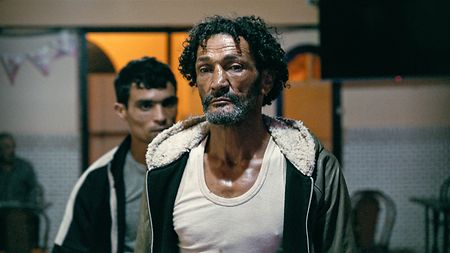
“Hounds” is a plunge into the underworld of Casablanca
What were director Kamal Lazraq’s image requirements?
I knew Kamal a little, as we both studied at La Fémis, but at different times. He preferred a highly immersive, documentary-style camera for this film. As he wanted to work with non-professional actors, we tried to provide optimal shooting conditions. All our choices were made with this constraint in mind. We shot the film in sequence so that the actors wouldn’t get lost. It wasn’t possible to ask them to do several takes or respect any marks. So, we had to adapt to their acting the whole time, which is why we decided to shoot the film handheld. I also used 360° lighting to give the actors free rein and follow them if necessary. As a result, I couldn’t have any legs on the ground. I would set up light sources high up so that they wouldn’t show in the images.
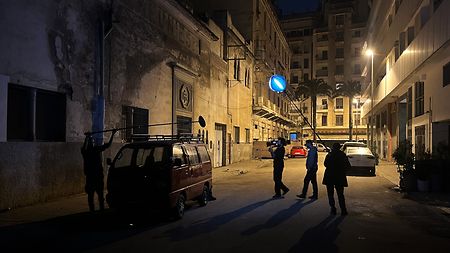
“I often had to turn off streetlamps to give the light direction,” says DP Berrada
You often used dark shots with very little lighting, a bit of a cinematographer’s dream. How did you manage it?
What interested me about “Hounds” was the balance between a very documentary framing and a very dark image, entirely captured at night. I loved playing with the codes of film noir in this film, especially the strong contrasts. Indeed, it is very painterly, like starting from a blank canvas, which leaves a lot of room for lighting. Starting with black, you can decide which details you are going to reveal and what remains hidden. Often, all I could see was the reflection of an eye, a few shimmers on the skin. I didn’t light anything else. “Hounds” is a plunge into the abyss. We as viewers are lost, exactly like the protagonists. They don’t know what to do to get out of their situation. And looking at the imagery, black almost becomes a character within the film. In the streets, I made use of the surrounding light. Casablanca is a city with a lot of sodium lighting; I often had to turn off streetlamps to give the light direction and prevent images from being uniformly orange. I liked this saturated sodium hue and often tried to accentuate it to give the impression of a city on fire. I also used battery-operated Chinese baubles, with a slightly cyan white for color contrast.
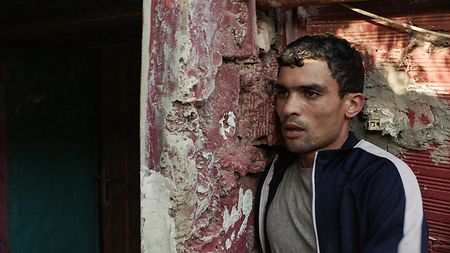
DP Amine Berrada wanted high-contrast images to incorporate a film noir style
Why did you choose to shoot “Hounds” with the ALEXA Mini?
It took me quite a bit to choose between different camera models. After some comparative tests, I finally opted for the ALEXA Mini. It’s a camera I know well. I knew how it would react, mainly in low light environments. I also like its compact size, especially because I shot the entire film handheld, including a lot of car scenes. I was looking for a raw, rough texture, but without necessarily adding grain because I liked the natural noise of this camera. To achieve this, I used the ALEXA Mini between ISO 1600 and 2000. This required very precise lighting. You can’t go wrong with exposure, otherwise noise builds up and the image becomes flat. In return, I had less dynamic range, but that didn’t bother me.
